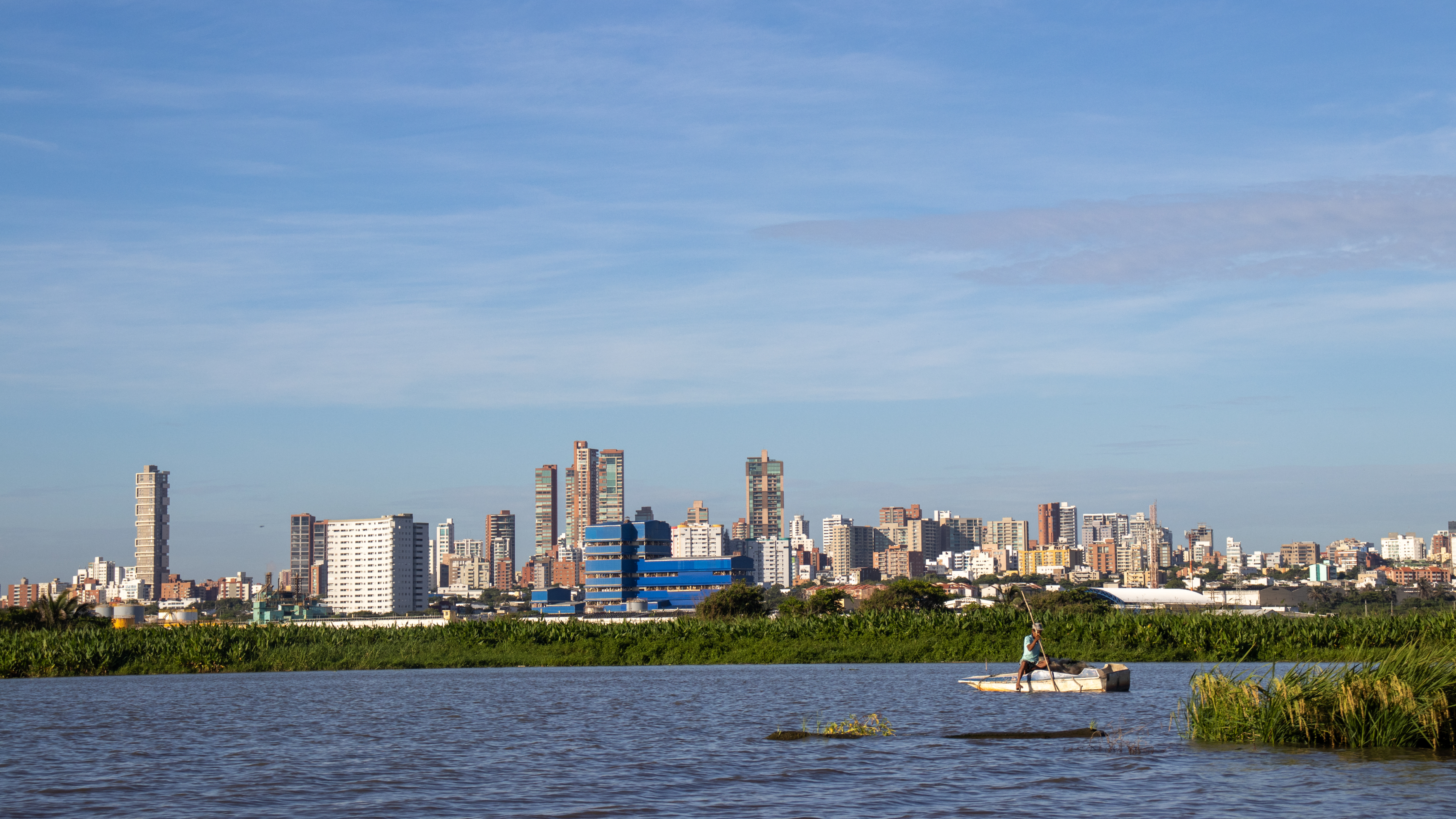Extreme heat is weakening cities, financial services can help build resilience

Cities don't have the infrastructure to withstand extreme heat. Image: Flickr/Paul Hudson
Listen to the article
- Extreme heat causes more deaths than any other weather-related hazard but seldom receives the same attention as visible disasters such as hurricanes, tornadoes or floods and the resounding impact stretches to the economy and socio-economic equity.
- The past seven years have been the warmest on record and the resulting heat waves have crippled infrastructure among other effects; mitigating the risks of extreme heat requires significant investment for climate resilience.
- Achieving climate resilience will require a multi-stakeholder approach, including a commitment from the financial services sector.
Extreme heat these summers past has had devastating effects. It has caused more deaths than any other weather-related hazard but seldom receives the same attention as visible disasters such as hurricanes, tornadoes or floods but a growing body of research is demonstrating the ways that extreme heat sickens and kills us.
There have been 2,000 fatalities in Spain and Portugal due to extreme heat in the past month alone. In North America, an estimated 20,000 deaths per year are linked to extreme heat. It is also linked to increased mental health risks, including substance abuse, anxiety disorders and schizophrenia. This impact on cognitive and personal development can add up over time, inhibiting national economic growth and individual social mobility, thereby exacerbating existing socio-economic inequities.

Companies estimate that over $1 trillion in assets are at risk because of climate change over the next 10 years, with heightened financial services exposure. By 2050, construction is projected to lose 3.5% of its total economic activity ($1.2 billion per year) and agricultural yields are expected to decline by 3.7% ($130.7 million per year). Overall, the economic and social consequences are severe and require more immediate attention.

Beyond the impact to the human body, extreme heat has strained critical infrastructure in cities worldwide, particularly in northern Europe, where heat waves increase in frequency and severity – the last seven years (2015-2021) being the warmest on record – more than in parts of the world at similar latitudes.
For example, in Britain, last month, record-breaking temperatures delayed train services amid fears of buckling tracks, diverted flights after runways melted and touched off dozens of fires as the London Fire Brigade saw its busiest week since World War II. In the capital, the cast-iron chains and sculptures of the Hammersmith Bridges were wrapped in foil to repel heat after cracks in the iron began to widen, raising fears that the majestic 19th-century bridge could collapse.
Extreme heat resilience
London’s strained infrastructure is a microcosm of the challenges faced by cities unaccustomed to and unprepared for hotter temperatures. City planners built infrastructure for a past climate, leaving our cities and citizens vulnerable to rapidly increasing temperatures. Addressing this growing threat will require significant investment in mitigation and a renewed multi-stakeholder focus on strengthening climate resilience.
The estimated investment needed to mitigate extreme weather and other shocks in developing countries is as much as $300 billion annually by 2030. An additional $90 trillion in infrastructure investment will be needed globally over the next decade to keep up with global growth expectations.
What can be done to mitigate these risks? First, unlike extreme weather events such as hurricanes and earthquakes, no classification and categorization system exists for extreme heat. When a “Category 3” hurricane is set to hit the southern coast of the United States, a robust early warning and emergency preparedness system can save lives and protect property. Cities worldwide can convene key stakeholders from city government, environmental scientists, insurers and heat advisors to create early warning preparedness systems that will mitigate the destruction from the future heat.

Seville, Spain, is leading in this space, where the city government implemented its new ranking and naming system with three tiers of heat waves based on specific criteria eliciting different responses from the city, including extending pool hours and deploying community health workers to check on vulnerable people. Kathy McCleod from the Adrienne Arsht Rockefeller Resilience Centre, which was instrumental in designing Seville’s heat categorization system, said that branding and naming heat waves help to “build a culture of preparedness and prevention,” allowing cities to respond efficiently to them.
Multi-stakeholder and system-wide approach
Extreme heat resilience is not something policymakers can accomplish alone. Seville’s approach to bolstering heat resilience was effective because of its multi-stakeholder approach that brought together leaders in public health, finance, insurance, and academia. Innovative solutions for building heat resilience, such as designing heat-resistant roads and rails and leveraging AI and drones to track drought and wildfire spread, will require a generation-defining commitment from the financial services sector.
In particular, the insurance sector can play a leading role in catalyzing investment in heat resilience and risk management. Insurers can work proactively with policymakers and builder associations to discourage development in high-risk zones, incentivize policyholders who invest in mitigating heat-related risks and improve the assessment of climate risk using advanced analytics.
Some firms offer policyholders a “resiliency credit” to assess their climate risk exposures and invest in resilience to climate disasters, including extreme heat and wildfires. By leveraging their sophisticated understanding of evolving risks to reprice and rearrange portfolios, insurers can avoid long-term exposure to climate risk and increase the demand for new insurance solutions and services to mitigate that risk.

Most importantly, policymakers and industry leaders must look beyond temporary mitigation measures to a system-based approach to prioritizing and incentivizing risk reduction and prevention measures. Investing in longer-term heat resilience will require better access to affordable capital for long-term interventions such as building financial and physical resilience to extreme heat.
Few sectors are better positioned to help lead efforts to confront the challenge of extreme heat than the financial services sector. With large pools of investable capital, long-term investment horizons and robust risk management and engineering experience, financial services institutions can play a critical and central role in leading mitigation efforts and investing in a more heat resilient future.
What’s the World Economic Forum doing about climate change?
Don't miss any update on this topic
Create a free account and access your personalized content collection with our latest publications and analyses.
License and Republishing
World Economic Forum articles may be republished in accordance with the Creative Commons Attribution-NonCommercial-NoDerivatives 4.0 International Public License, and in accordance with our Terms of Use.
The views expressed in this article are those of the author alone and not the World Economic Forum.
Stay up to date:
Cities and Urbanization
Forum Stories newsletter
Bringing you weekly curated insights and analysis on the global issues that matter.
More on Built Environment and InfrastructureSee all
Jeff Merritt and Vivian Brady-Phillips
December 9, 2025







